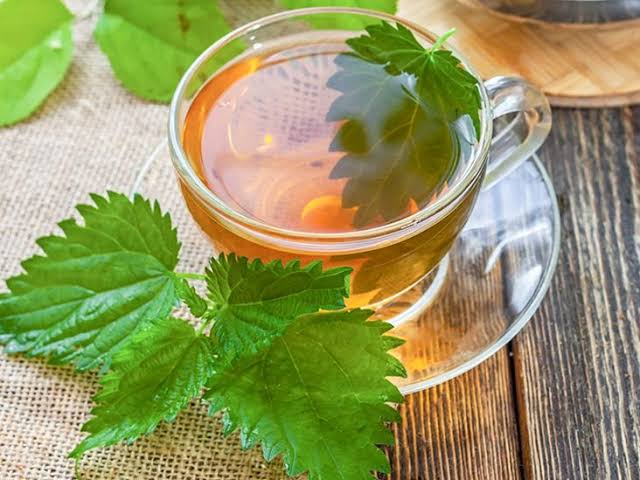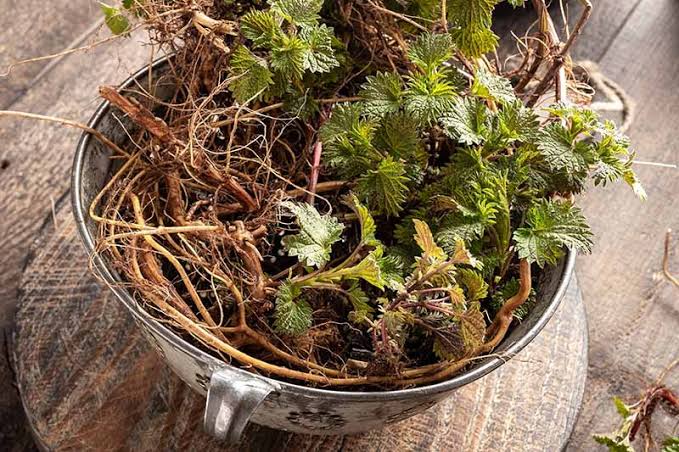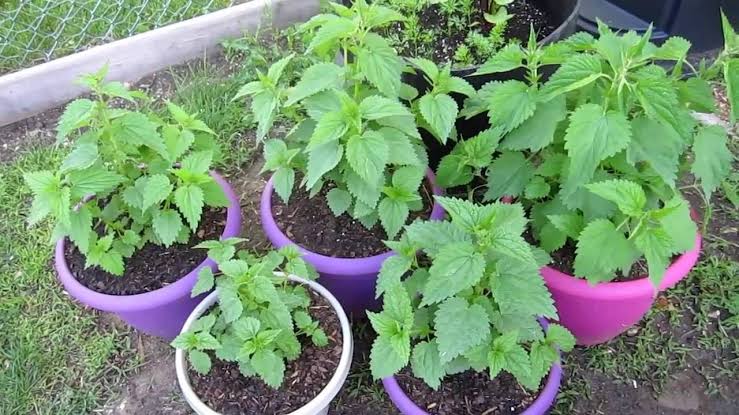Stinging Nettle Tea is a special kind of tea made from the leaves of the stinging nettle plant. This tea has been enjoyed by people for centuries because it not only tastes good but also has many health benefits.
Stinging nettle, also known as Urtica dioica, is a plant that is found in many parts of the world. It gets its name from the tiny, hair-like structures on its leaves and stems that can cause a stinging sensation when touched. Despite its sting, people have learned to harvest the leaves carefully to make a delightful tea.
To make Stinging Nettle Tea, you need to gather fresh nettle leaves. It’s essential to wear gloves during this process to avoid getting stung. Once you have the leaves, you can either dry them for later use or use them fresh. To make the tea, you simply steep the leaves in hot water for a few minutes. Some people like to add honey or lemon for extra flavor.
Stinging Nettle Tea has a unique taste. It’s often described as earthy, grassy, and slightly bitter. Some people find it to be an acquired taste, but many enjoy its distinct flavor. The aroma is herbal and can be quite soothing.
Stinging Nettle Tea is a remarkable beverage with a unique taste and numerous health benefits. Despite its initial sting, people have come to appreciate its soothing qualities and potential to support overall well-being. Whether you enjoy it for its flavor or its health advantages, Stinging Nettle Tea is a wonderful addition to your tea collection.
Read Also: Pests of Stored Products and Damages Caused
11 Health Benefits of Stinging Nettle Tea

Here are 11 health benefits of Stinging Nettle Tea:
1. Nutrient-Rich: Stinging Nettle Tea is packed with essential vitamins and minerals, including vitamins A, C, and K, as well as iron and calcium, which contribute to overall health.
2. Anti-Inflammatory: The tea contains compounds that may help reduce inflammation in the body, potentially aiding in the management of inflammatory conditions.
3. Allergy Relief: Stinging Nettle Tea is known for its potential to alleviate allergy symptoms, such as sneezing, runny nose, and itchy eyes, thanks to its anti-allergenic properties.
4. Blood Sugar Control: Some studies suggest that regular consumption of this tea may help regulate blood sugar levels, which can be beneficial for individuals with diabetes.
5. Digestive Aid: Stinging Nettle Tea can promote healthy digestion and soothe gastrointestinal discomfort, making it a useful remedy for upset stomachs.
6. Hydration: Like other herbal teas, Stinging Nettle Tea provides hydration without the added calories and sugars found in many other beverages.
7. Joint Health: It may help alleviate joint pain and discomfort due to its anti-inflammatory properties, potentially benefiting those with arthritis or other joint-related issues.
8. Blood Pressure Regulation: Some research suggests that this tea can have a mild hypotensive effect, potentially assisting in the management of blood pressure levels.
9. Detoxification: Stinging Nettle Tea is believed to have detoxifying properties, aiding the body in eliminating waste and toxins.
10. Hair and Skin Health: When applied topically or consumed regularly, Stinging Nettle Tea may contribute to healthier hair and skin, thanks to its nutrient content.
11. Menstrual Relief: Some women find relief from menstrual symptoms like cramping and bloating by drinking Stinging Nettle Tea, as it may help regulate hormones.
It’s important to note that while Stinging Nettle Tea offers these potential health benefits, individual responses may vary. It’s always a good idea to consult with a healthcare professional before making significant dietary changes or using herbal remedies for specific health concerns.
Stinging Nettle Root

Stinging Nettle Root comes from the same stinging nettle plant as the leaves, but it’s a different part with its own set of unique qualities. This root has been used for various purposes for a long time, and it’s essential to understand why it’s so interesting.
Stinging nettle root, or Urtica dioica root, is the underground part of the stinging nettle plant. Unlike the leaves that can sting when touched, the root doesn’t have this stinging effect. Instead, it offers a range of potential health benefits.
People use stinging nettle root in different forms, such as capsules, extracts, or as a dried root for tea. These forms make it easy for people to include it in their daily routines.
Health Benefits of Stinging Nettle Root
1. Prostate Health: Some folks use stinging nettle root to support a healthy prostate. It may help alleviate symptoms of an enlarged prostate, like frequent urination.
2. Anti-Inflammatory: Stinging nettle root has compounds that might reduce inflammation, making it useful for conditions like arthritis and joint pain.
3. Hair Loss: People have explored stinging nettle root as a potential remedy for hair loss. It’s believed to block the hormone responsible for hair loss in some cases.
4. Allergy Relief: Similar to the leaves, stinging nettle root might help with allergy symptoms, particularly those related to seasonal allergies.
5. Blood Sugar Control: Some studies suggest that it may contribute to better blood sugar control, which is beneficial for individuals with diabetes.
6. Diuretic Properties: Stinging nettle root has diuretic effects, meaning it can increase urine production and help flush out toxins from the body.
7. Digestive Aid: It may assist in soothing digestive issues and improving overall gut health.
8. Hormone Balance: Stinging nettle root could help balance hormones in the body, especially in women during menopause.
9. Immune System Support: Some believe it can strengthen the immune system, helping the body ward off infections.
10. Rich in Nutrients: Stinging nettle root is a source of essential nutrients like vitamins and minerals, adding to its potential health benefits.
Stinging Nettle Root is a fascinating natural remedy with various potential health benefits. People have been using it for generations to address a range of health concerns, from prostate health to hair loss and allergies. While it’s generally considered safe, it’s advisable to consult with a healthcare professional before adding it to your daily routine, especially if you have any underlying health conditions or are taking medications.
Read Also: Storage and Quality Control of Animal Feeding Stuffs and Forage
How to Grow the Stinging Nettle Plant

Growing stinging nettle plants can be a rewarding endeavor, but it’s essential to handle them with care due to their stinging hairs. Here’s a simple guide on how to grow stinging nettle:
1. Choose a Suitable Location: Stinging nettles thrive in moist, fertile soil and partial shade. Select a location in your garden that receives dappled sunlight or partial shade.
2. Prepare the Soil: Ensure the soil is well-draining and rich in organic matter. You can amend the soil with compost to improve its fertility.
3. Collect Stinging Nettle Seeds or Cuttings: You can start stinging nettle from seeds or cuttings. If using seeds, collect mature seeds from existing plants or purchase them from a reputable source. If using cuttings, choose healthy stems from established plants.
4. Planting Stinging Nettle: If using seeds, sow them in late winter or early spring, as they require a period of cold stratification. Scatter the seeds on the prepared soil surface, and lightly press them into the soil. Keep the soil consistently moist until germination occurs.
If using cuttings, plant them about 2 inches deep in the soil, spacing them about 12 inches apart.
5. Watering: Stinging nettles need consistent moisture. Water them regularly to keep the soil evenly moist, especially during dry spells.
6. Mulch: Applying a layer of mulch around the plants can help retain soil moisture and prevent weeds from competing with your nettles.
7. Maintenance: Stinging nettles can grow vigorously and may require pruning to keep them in check. Be sure to wear gloves and long sleeves when handling them to avoid the stinging hairs.
8. Harvesting: You can harvest stinging nettle leaves and young shoots for culinary and medicinal purposes. Harvest the leaves before the plant flowers, as they become bitter afterward. Use scissors or garden shears, and again, protect your hands with gloves.
9. Stinging Hair Safety: Be cautious when handling stinging nettles. Wear gloves and protective clothing to avoid contact with the stinging hairs on the leaves and stems.
10. Controlling Spread: Stinging nettles can spread through underground rhizomes, so consider planting them in containers or in a designated area to prevent them from taking over your garden.
11. Overwintering: In colder climates, stinging nettles may die back in the winter but often return in the spring. You can cut them back to the ground after they die back in the fall to tidy up your garden.
Stinging nettles are hardy plants and can be a valuable addition to your garden, providing you with fresh, nutritious leaves for culinary purposes and potential medicinal benefits. Just remember to take precautions when handling them to avoid their stinging hairs.
Read Also: The Benefits of Landfill Monetization Business Ideas
